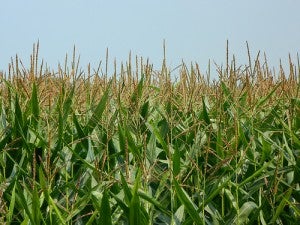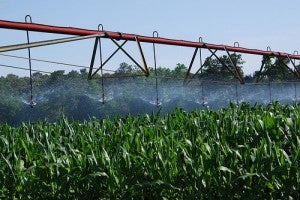
Credit: Flickr user Ruben Holthuijsen
There is no shortage of news about the contamination of drinking water sources caused by fertilizer run-off from agriculture. And there is no shortage of regulatory responses to these events: Ohio and Michigan’s commitment to reduce phosphorus levels in Lake Erie by 40 percent; the nitrate lawsuit in Des Moines, Iowa, and Monday’s ruling on the Environmental Protection Agency’s authority to enforce total maximum daily load specifications for the Chesapeake Bay.
In addition, food companies wanting to source sustainably grown grains to meet that consumer demand and reduce their own supply chain risks are sending the same signal, further shining the spotlight on the growing demand for improved environmental outcomes from how we produce food.
If farmers can help meet these demands by being increasingly efficient with nutrients and protecting their soils, they will see nearer term benefits and possibly stem future regulations. Here’s why:
Cost-savings and increased yields
Farmers spend up to 50 percent of their input costs on fertilizer, even though, on average, only 50 percent of fertilizer applied is taken up by the plant while the rest contributes to decreases in drinking water quality and increases in greenhouse gas emissions.
If growers apply nutrients more precisely and protect their soils, more fertilizer will get to the plant’s roots – that equals more crop per drop of fertilizer and reduced runoff that is both costly and creates regulatory risk.
Resources like United Suppliers’ SUSTAIN platform, which combines a set of proven, effective tools that improve nutrient use efficiency and reduce soil erosion can help farmers get started on fertilizer optimization and protect yields.
Improved soil health and farm resilience
Measures such as cover crops and conservation tillage can go a long way towards improving soil health. Healthier soils do a better job of holding water, holding nutrients and sustaining higher yields. Add in wetlands strategically located at farm drainage points to capture nutrients that would otherwise escape, you realize farmers can do a lot to proactively protect drinking water quality and address growing demand for improved environmental outcomes from how we produce food.

Credit: Delaware Cooperative Extension
Increased market appeal
Increasing farm sustainability through fertilizer optimization and soil conservation measures makes good business sense. But it can also make growers more attractive to the increasing number of food companies interested in sustainable grains. It’s an opportunity to gain a competitive advantage.
And the more nutrients and soils stay on the farm, the less need for regulations.









